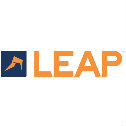Craig Taylor of LEAP Legal Software has spoken to Today’s Conveyancer and given his expert tips on how technology can aid law firm compliance and efficiency.
Technology is a huge factor in ensuring compliance. Its effective and comprehensive use is the secret to making compliance in conveyancing simple. Technology helps enable consistency and accurate outcomes, of which the natural consequences are efficiency, compliance and reduction of risk.
Here are a few suggestions of how technology can assist compliance.
The organisation of data
Technology can improve the capture and reuse of inputted data. It can improve accuracy and streamline processes through the prevention of rekeying data. In some instances, using client onboarding, or intake forms, this means there is a “zero entry” solution whereby the end-user client inputs the data themselves. Technology creates a single source of truth, where everybody within the practice will have access to the same accurate, real-time matter and client information.
Improved access to legal documentation
You need round the clock access to up-to-date forms and precedents to ensure consistency of practice using the latest legal documentation. No more using old forms and having them rejected. To ensure compliance and consistency across multiple locations documents can be automatically applied in line with when legislation changes occur. The availability of online platforms provides access to conveyancing guides and commentaries.
Security and fraud prevention
Share and access client and matter details through secure encrypted portals and all information held secure servers like Amazon Web Service. Avoid the reliance of email when collaborating on conveyancing docs, use secure document sharing via specialist platforms such as LawConnect. Online interception by fraudsters and also by other parties in a transaction is rife and encrypted solutions are the only way to avoid this.
Online Client Collaboration
Your web presence has never been more important, more and more clients now search Google to find legal services. Beyond the sales and marketing benefits, demonstration of your past clients’ experiences and peer reviews via review platforms is increasingly important. Also, with technology now at the forefront of client engagement, strengthened by remote working, clients want to be able to engage with you 24/7, from wherever they want and using a device of their choosing. Collaborative tools facilitating client engagement, appointment booking and online payments will promote efficiencies which will improve the process, the client experience and also ensure compliance.
Video conferencing
Using tools such as Teams and Zoom was alien to many practices just a few short months ago but now forms a normal part of daily life, when these tools are imbedded into your core software, data management and client engagement is improved and consolidated.
Covid has been bad, full stop. But it has also fast tracked the development and deployment of technology, it is essential that as an industry we adopt these new solutions (they aren’t going anywhere) and they are designed to provide efficiencies and compliant approaches to our daily operation. If the pandemic had hit ten years ago, we wouldn’t have been able to operate but technology has facilitated and enhanced our offering and will be a core requirement long into the future.
Craig Taylor has 20 years of experience across: property, the legal sector, technology and customer service. As director of relationship development at LEAP UK, Craig has been instrumental in empowering and educating law firms on the importance of combining technology and improving processes that ensure compliance. Craig works with 100’s of conveyancing firms using LEAP across the UK, advising on how they can improve consistency and accuracy of service through LEAP, the largest privately-owned supplier of software and content to small and medium-sized law firms in the world.




















